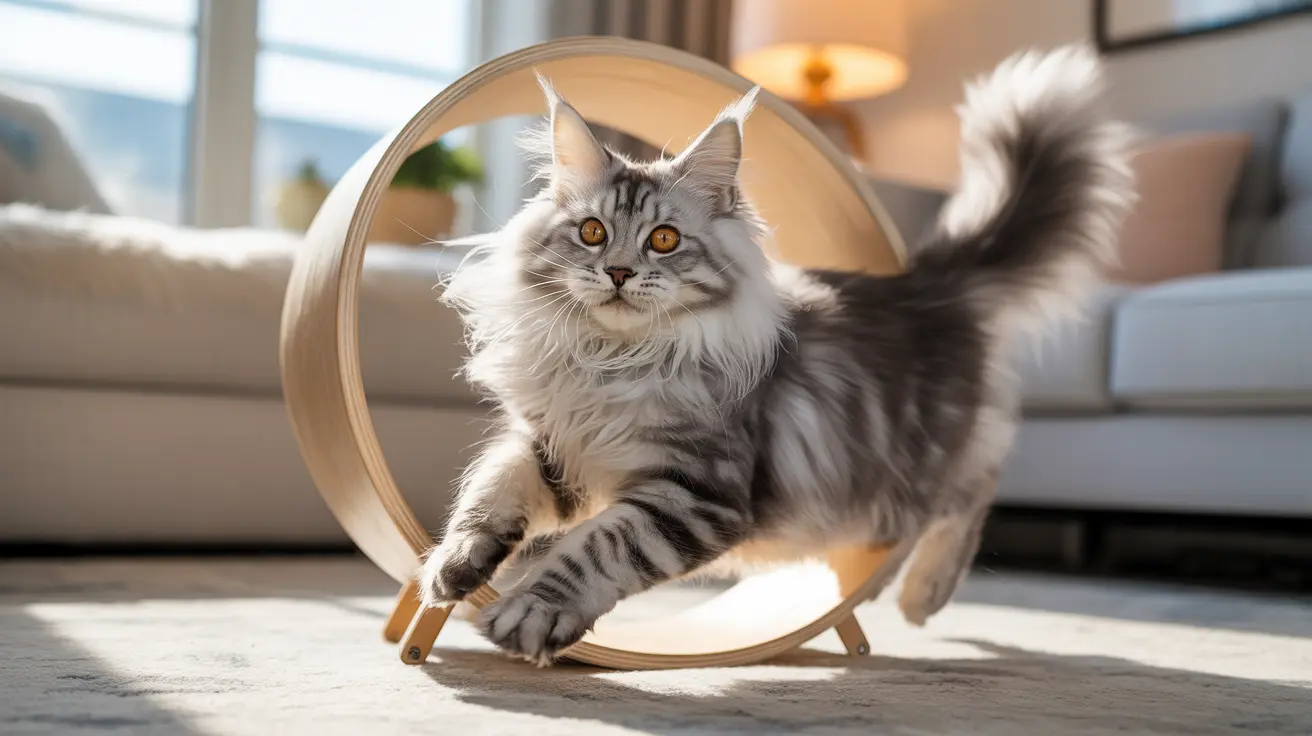Looking to keep your indoor cat active and engaged? A DIY cat exercise wheel could be the perfect solution. This comprehensive guide will walk you through everything you need to know about creating a safe, effective exercise wheel for your feline friend while potentially saving money compared to commercial options.
Not only do cat exercise wheels provide essential physical activity for indoor cats, but they also offer mental stimulation and help prevent obesity-related health issues. Let's explore how you can build one that's perfect for your pet.
Essential Materials and Tools
Before starting your DIY cat exercise wheel project, gather these necessary materials:
- Sturdy plywood or MDF boards
- High-quality ball bearings
- Carpet or rubber matting for traction
- Metal rod for axle
- Screws and bolts
- Power drill
- Jigsaw
- Measuring tape
- Sandpaper
Designing Your Cat Exercise Wheel
The success of your DIY wheel starts with proper design considerations:
- Diameter: 40-48 inches for adult cats
- Running surface width: 12-14 inches
- Base stability: At least 24 inches wide
- Height: Adjustable to your cat's size
Safety Features to Include
Safety should be your top priority when building a cat exercise wheel:
- Rounded edges to prevent injury
- Non-toxic materials and finishes
- Smooth-running bearings
- Secure base mounting
- Gap-free construction
- Optional locking mechanism
Construction Steps
1. Creating the Wheel Frame
Start by cutting two identical circles from your plywood using the jigsaw. Sand all edges smooth and ensure perfect roundness for proper operation.
2. Building the Running Surface
Connect the circles with support strips, then cover with carpet or rubber matting for traction. Ensure the surface is firmly attached and free from loose edges.
3. Installing the Axle System
Mount the ball bearings in the center of your wheel, insert the metal axle, and secure everything properly. This is crucial for smooth operation.
4. Base Construction
Create a sturdy base that prevents tipping and allows for easy wheel movement. Consider adding adjustable feet for perfect leveling.
Training Your Cat
Once your wheel is complete, introduce your cat gradually:
- Place the wheel in a familiar area
- Use treats and toys to create positive associations
- Never force your cat onto the wheel
- Reward any interest or interaction
- Be patient during the learning process
Maintenance Tips
Regular maintenance ensures safe operation:
- Check bearings monthly
- Inspect the running surface for wear
- Tighten all hardware regularly
- Clean the wheel surface weekly
- Listen for unusual sounds
Frequently Asked Questions
How do I build a safe and effective DIY cat exercise wheel for my indoor cat?
Build a safe DIY cat exercise wheel by using sturdy materials like plywood or MDF, installing quality ball bearings, and covering the running surface with non-slip material. Ensure all edges are rounded and there are no gaps where paws could get caught.
What materials and tools do I need to create a sturdy and quiet cat exercise wheel at home?
You'll need plywood/MDF boards, ball bearings, carpet or rubber matting, a metal axle, screws, and bolts. Tools required include a jigsaw, power drill, measuring tape, and sandpaper. Quality ball bearings are essential for quiet operation.
How can I train my cat to use an exercise wheel gradually and safely?
Start by placing treats on the wheel's surface and letting your cat explore at their own pace. Use toys to encourage movement, and reward any interaction. Never force your cat onto the wheel, and make training sessions short and positive.
What safety features should I include when making or buying a cat exercise wheel?
Essential safety features include rounded edges, non-toxic materials, secure mounting, gap-free construction, and a non-slip running surface. Consider adding a locking mechanism for when the wheel isn't in use.
Are cat exercise wheels suitable for cats of all ages and activity levels?
While cat exercise wheels can benefit most cats, they're best suited for active, healthy cats. Consult your veterinarian before introducing elderly cats or those with health issues to wheel exercise.
Conclusion
Building a DIY cat exercise wheel requires careful planning and attention to detail, but the results can provide your feline friend with years of healthy exercise and entertainment. Remember to prioritize safety in your design and construction, and be patient during the training process.
With proper construction and introduction, your homemade cat exercise wheel can become a valuable addition to your pet's daily routine, promoting both physical and mental well-being.






